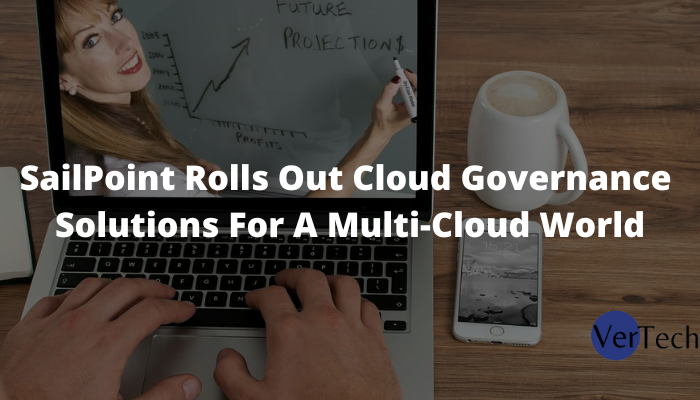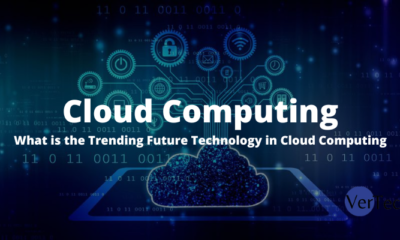Business
SailPoint Rolls Out Cloud Governance Solutions For A Multi-Cloud World

One can’t make a deal without innovation in today’s modern digital environment, and certainly can’t utilize software without identification security.
Identity protection (formerly referred as identity management and identity authentication) guards against cyber risks that come with giving a wide range of employees access to information. It accomplishes this by allowing for the control and administration of access for all digital identities within a company. With the increasing use of technology inside the digital enterprise, it’s more important than ever to safeguard your company against cyber threats that attack authentication methods.To get an in-depth understanding of how cloud governance solutions benefit the business, taking up the Sailpoint Training is an added advantage.
Let’s explore each step of how SailPoint rolls out cloud governance solutions for a multi-cloud world in detail.
What is a digital identity?
A digital identity is a set of identification tags that assist computer systems in identifying externally and internally users, as well as the resources they have accessibility to. During their time with an organization, these related IDs or characteristics are maintained and updated, maintaining privileges and security procedures current. Email account, login information (userid), pin codes, and other attributes are examples of attributes.
To give employees internet access, they need digital IDs. They, along with the information they provide, pose a risk to companies if they are not adequately controlled and regulated. Having hundreds of millions, if not thousands, of digital certificates spread across an organization, maintaining a minimal access model to every digital identity becomes vital to a safety program’s overall wellbeing.
As per a recent Identity Defined Security Alliance (IDSA) survey, 94 percent of firms have had a personality breach, but shockingly, 99 percent of such attacks were fully avoidable, as according to the report.
The above highlights the need of firms taking a constructive attitude to identity security. Companies must be able to identify, protect, and administer every sort of identity, including workers, freelancers, vendors, consumers, and sometimes even non-human customers like computers and robots, even as digitalisation progresses.
Access management isn’t the only thing that matters when it comes to identity security.
When businesses hear the phrase identity, users may automatically assume access control techniques like Single Sign-on (SSO) or Multi-factor Identification (MFA). That is, nevertheless, even just a portion of the identification story. Authenticity ensures that the person is who they claim to be. This method, on the other hand, does not contain cross-checks seeing if credentials are permitted and follows access restrictions. Moreover, SSO or MFA are unable to control or limit what information that people may view or touch inside a service, which is becoming extremely critical as data protection legislation places greater responsibility on enterprises to secure confidential material.
Identity security contributes to the overall picture. It assists in granting, securing, and managing access based on the idea of access privileges (PoLP). This really is the concept that each identity in the organization will only have the accessibility they require to perform their tasks. Why? You can limit the danger of customers having access to data they shouldn’t have and unintentionally or deliberately doing anything with this by limiting privileges related to job purpose and customer role.
Identity security emphasizes on enabling and safety access even while ensuring that this is adequately regulated. It entails designing policies to regulate accessibility throughout the lifespan of an online identity, as well as establishing and establishing user roles.
For compliance management, knowing who needs particular accessibility while being capable of adjusting and deleting that access privileges on modifications is crucial. Identity security hinges on the definition and implementation of access policies. Without access restrictions, technology is useless.
As a result of the technological paradigm change, teleworking, and internet efforts, businesses must modernize and integrate identity protection as part of the comprehensive cybersecurity strategy.
Identity protection for cloud businesses.
A powerful identification protection solution enables access while protecting corporate operations—everywhere, including hybrid & multi-cloud settings, virtual organizations, many devices, and more.
Firms have realized that identity protection provides numerous areas of business benefit, including risk reduction, automation of IT operations, and improved employee experience.
By appropriately granting access, securing your organization at scale, and maintaining compliance, identity protection accomplishes the goals.
Provision With conviction:
You’ll also be able to utilize Ai and Machine learning technologies to appropriately provision and give the best access to appropriate people at the start of the induction programme all through a participant’s lifetime as they shift positions or depart the organization if you choose a robust identification security solution.
Identity security makes it easier to manage and regulate identities, roles, and permissions for all apps, networks, data, including cloud computing while preserving uniformity and visibility throughout the whole enterprise.This makes identifying hazards, monitoring habits, and fine-tuning roles a breeze.
Protecting at huge scale:
At a huge scale, protect.
When expanding core businesses, it’s vital to keep your firm operational while also maintaining security. How do you make sure that your company can handle thousands of credentials and routers while also minimizing risk?
Deep analysis and deep learning are used in identify protection to locate and recognize threats, as well as distinct responsibilities (SoD) to implement security measures and design and implement customized access restrictions. As a result of developing these policies, it is possible to achieve regulatory requirements while maintaining operating efficiencies.
One can handle customers, applications, and permissions in large quantities, no issue where you have been, using identity protection at the helm.
Comply without hesitation:
You may fully comply with auditors by managing user access, measuring consumption, and implementing policy restrictions for all individuals, applications, and information.
By giving visibility through every online identity inside the company, identity security assures compliance requirements. Their characteristics, permissions, and sometimes even accessing history are all included.
You can utilize Intelligent automation to swiftly verify users, keep audit logs of identities, permissions, policies, and activities, and administer initiatives all through the customer lifetime with such a strong identification security feature.
Conclusion:
In the blog post we had learned about how SailPoint Identity Security can help your cloud business.You could streamline manual operations, alter business security strategy from new tech to individuals, and develop fixed policies into self-learning & adaptable regulations using SailPoint Identification Security.If you had any doubts drop them in comments section to them answered.
-
Blog1 year ago
MyCSULB: Login to CSULB Student and Employee Portal – MyCSULB 2023
-
Android App3 years ago
Cqatest App What is It
-
Android1 year ago
What Is content://com.android.browser.home/ All About in 2023? Set Up content com android browser home
-
Software2 years ago
A Guide For Better Cybersecurity & Data Protection For Your Devices
-
Latest News2 years ago
Soap2day Similar Sites And Alternatives To Watch Free Movies
-
Android2 years ago
What is OMACP And How To Remove It? Easy Guide OMACP 2022
-
Android3 years ago
What is org.codeaurora.snapcam?
-
Business2 years ago
Know Your Business (KYB) Process – Critical Component For Partnerships























